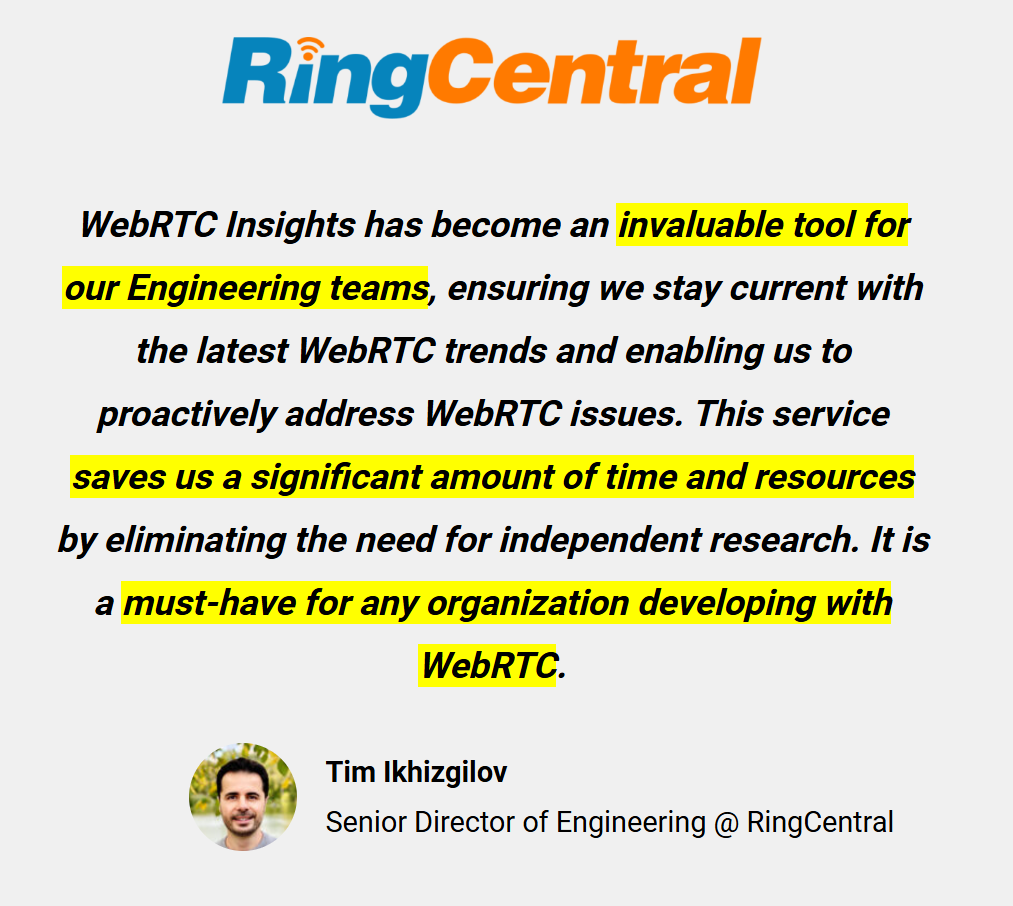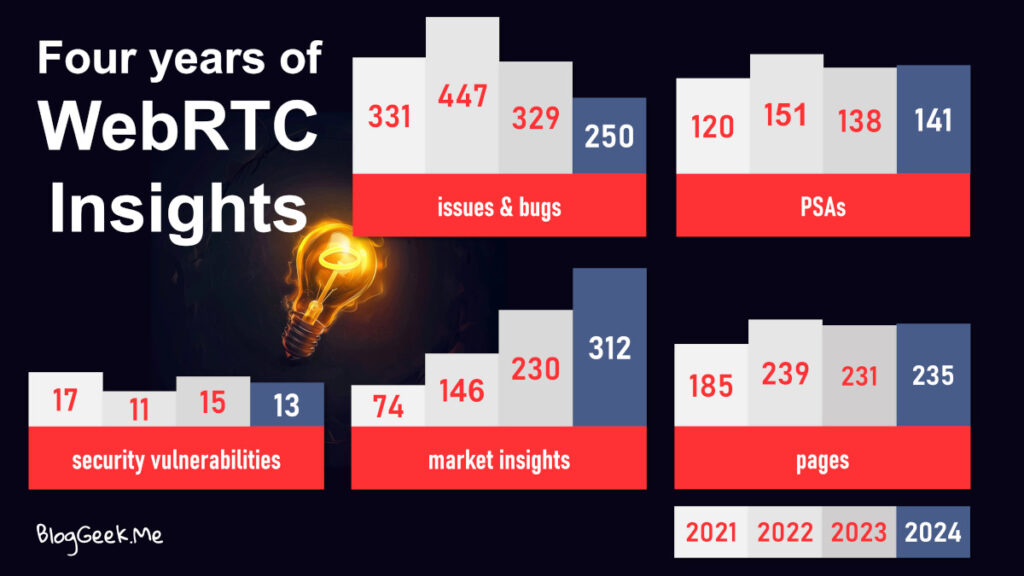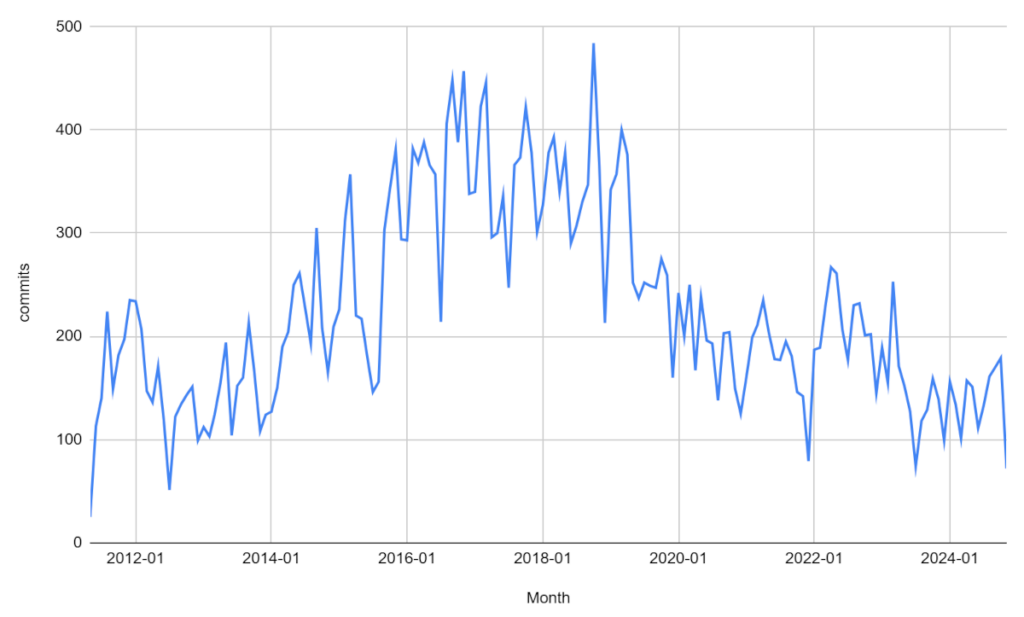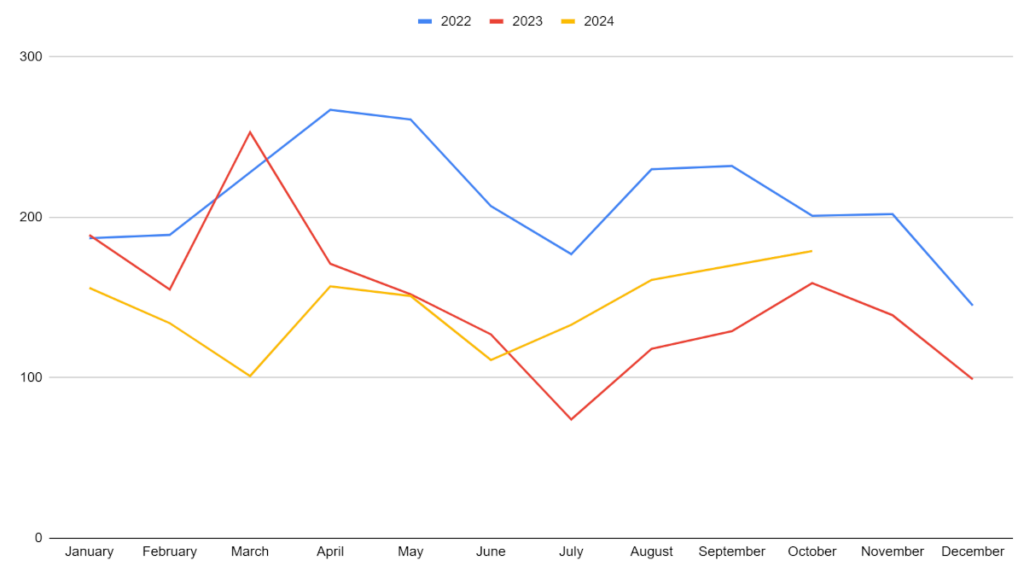Stay informed about the latest trends and insights in WebRTC technology. Our unique service offers expert analysis and valuable information for anyone developing using WebRTC.

We are into our 5th year of WebRTC Insights. Along with Philipp Hancke, I’ve been doing this premium biweekly newsletter. Every two weeks, we send it out to our subscribers, covering everything and anything that WebRTC developers need to be aware of. This is used to guide developers with the things important to them. We include bug reports, upcoming features, Chrome experiments, security issues and market trends.
The purpose of it all? Letting developers and decision makers who develop with WebRTC focus on their own application, leaving a lot of the issues that might surprise them to us. We give them the insights they need before they get complaints from customers or get surprised by their competitors.
Each year Philipp asks me if this might be our last one, because, well, let’s face it – there are times when the newsletter is “only” 7 or 8 pages long without a lot of issues. The thing is, whatever is in there is important to someone. I myself took note of something Philipp indicated in issue #102 to be sure to integrate it into our testRTC products.

Why is WebRTC Insights so valuable to our clients?
It comes down to two key benefits:
- Time
- Focus
We help engineers and product teams save time by quickly identifying WebRTC issues and market trends. Instead of spending hours searching the internet for clues or trying to piece together fragmented information, we deliver everything they need directly – often several days before their clients or management bring up the issue.
Beyond saving time, we help clients stay focused on what matters most. Whether it’s revisiting past issues, tracking security concerns, understanding Google’s ongoing experiments, or staying updated on areas where Google is investing, we make it easy for them to stay informed.
If I weren’t so humble, I’d say that for those truly dedicated to mastering WebRTC, we’re a force multiplier for their expertise.
WebRTC Insights by the numbers
Since this is the fourth year, you can also check out our past “year in review” posts:
This is what we’ve done in these 4 years:

26 Insights issued this year with 250 issues & bugs, 141 PSAs, 13 security vulnerabilities, 312 market insights all totaling 235 pages. We’re keeping ourselves busy making sure you can focus on your stuff.
We have covered well over a thousand issues and written close to 1,000 pages so far.
2024…
In the past year, we’ve seen quite a steep decline in issues and bugs that were filed and we talked about. From our peak of ~450 a year in 2022, to ~320 in 2023 and now 250 in 2024:
| Year | Issues we reported on | Issues filed (libWebRTC/Chrome) |
| 2020-2021 | 331 | 658 / 579 |
| 2021-2022 | 447 | 549 / 639 |
| 2022-2023 | 329 | 515 / 557 |
| 2023-2024 | 250 | 361 / 420 |
This correlates with the overall decline in the activity around libWebRTC which has dropped below 200 commits per month in the last year:

This is more visible by looking at the last three years:

The Google team working on WebRTC is now just keeping the lights on. While commit numbers stayed roughly the same, external contributions are now approximately 30% of the total commits. There’s little in the way of innovation and creativity. Most of the work is now technocratic maintenance, if we were to use boring slur words…
The reality is that libWebRTC is mature and good enough. It is embedded inside Chrome, with over a billion installations, and any change in it has a wide range of effect on many applications and users. In the language of Werner Vogels, the CTO of AWS, the blast radius of a bug in libWebRTC can be rather big and impactful.
Let’s dive into the categories of our WebRTC Insights service, to figure out what we’ve had in our 4th year.
Bugs
In this section we track new issues filed and progress (in the form of code changes) for both libWebRTC and Chromium. We categorize the issues into regressions for which developers need to take action, insights and features which inform developers about new capabilities or changes to existing behavior and assign a category such as “audio”, “video” or “bandwidth estimation” to make it easy for more specialized developers to only read about the issues affecting their area.
A good example of regressions this year were several regressions in the handling of H.264:
- Compatibility fallback for H.264 hardware-encoded streams starts from M128
- [Regression] Depacketizer failure on empty nalu payload
In a nutshell, relatively harmless and very reasonable changes to the way libWebRTC deals with H.264 packetization caused interop issues for services that use H.264 and rely on some of its more exotic features. And those changes made it all the way to Chrome stable which suggests a lack of testing in Beta and Canary versions.
We also track progress on feature work such as “corruption detection” and speculate on why Google is embarking on such projects:

Google migrating both Chromium and WebRTC from the Monorail issue tracker system to the more modern Buganizer caused us a little bit of a headache here.
PSAs & resources worth reading
In this section we track “public service announcements” on the discuss-webrtc mailing list, webrtc-related threads on the blink/chromium mailing list, W3C activity (where we often shake our heads) and highly technical blog posts which do not fit into the “market” category.
A good example of this is Google experimenting with a new way to put the device permissions into the page content which we noted in May, followed by seeing how Google Meet put this into action in November. The process for this is “open” but as a developer you need to be aware of what is possible and being experimented with by Google to keep up.
We also used to track libWebRTC release notes in this section but stopped sending those earlier this year when the migration from Monorail to Buganizer broke the tooling we had. Not many folks missed them so far.
Experiments in WebRTC
Chrome’s field trials for WebRTC are a good indicator of what large changes are rolling out which either carry some risk of subtle breaks or need A/B experimentation. Sometimes, those trials may explain behavior that only reproduces on some machines but not on others. We track the information from the chrome://version page over time which gives us a pretty good picture on what is going on. Most recently we used it to track how Google is experimenting with a change in getUserMedia which changes how the “ideal” deviceId constraint behaves:

See this issue for more information about the change. We also waved goodbye to the longest-lasting field trial which had been with us the entire four years, being enabled 100% and causing a different behavior in Chrome versus Chromium-based browsers not using Google’s field trial configuration such as Microsoft Edge:
WebRTC-VP8ConferenceTemporalLayers
It was removed (without the default value changing) in this commit. Which is great because it had side-effects on other codecs like H.264.
WebRTC security alerts
We continued tracking WebRTC-related security issues announced in the Chrome release blog. We had eight of them this year, all but one related to how Chromium manages the underlying WebRTC objects. And a vulnerability in the dav1d decoder (as we predicted last year, codec implementations will get some more eyes on them).
WebRTC market guidance
What is happening in the world of WebRTC? Who is doing what? Why? When? Where?
We’re looking at the leading vendors, but also at the small startups.
There are probably 3 main areas we cover here:
- CPaaS and Programmable Video – what are these vendors up to? How are they differentiating from each other? What do they dabble with when it comes to WebRTC?
- Video conferencing and collaboration – what are the leaders here doing? Especially Google Meet, and how it affects WebRTC itself. But also how others are leveraging WebRTC in meaningful ways
- LLM and Generative AI – this popped up in 2024 and will likely grow strong into 2025. Understanding where the challenges are and what solutions vendors come up with in this area, especially in the low latency space where WebRTC is needed
From time to time, you’ll see us looking at call centers, security and privacy, governance, open source, etc. All with a view from the prism of WebRTC developers and with an attempt to find an insight – something actionable for you to do with that information.

The purpose of it all? For you to understand the moves in the market as well as the best practices that are being defined. Things you can use to think over your own strategy and tactics. Ways for you to leave your company’s echochamber for a bit. All in the purpose of improving your product at the end of the day.
With our shift towards an ever maturing WebRTC market, the market insights section is growing as well. We expect this to happen in the coming year yet again.
Join the WebRTC experts
We are now headed into our fifth year of WebRTC Insights.
On one hand, there are less technical issues you will bump into. But those that you will, are going to be more important than ever. Why? Because the market is maturing and competition is growing.
So if you’re working with WebRTC and not subscribed to the WebRTC Insights yet – you need to ask yourself why it is. And if you might be interested, then let me know – and I’ll share with you a sample issue of our insights, so you can see what you’ve been missing out on.

